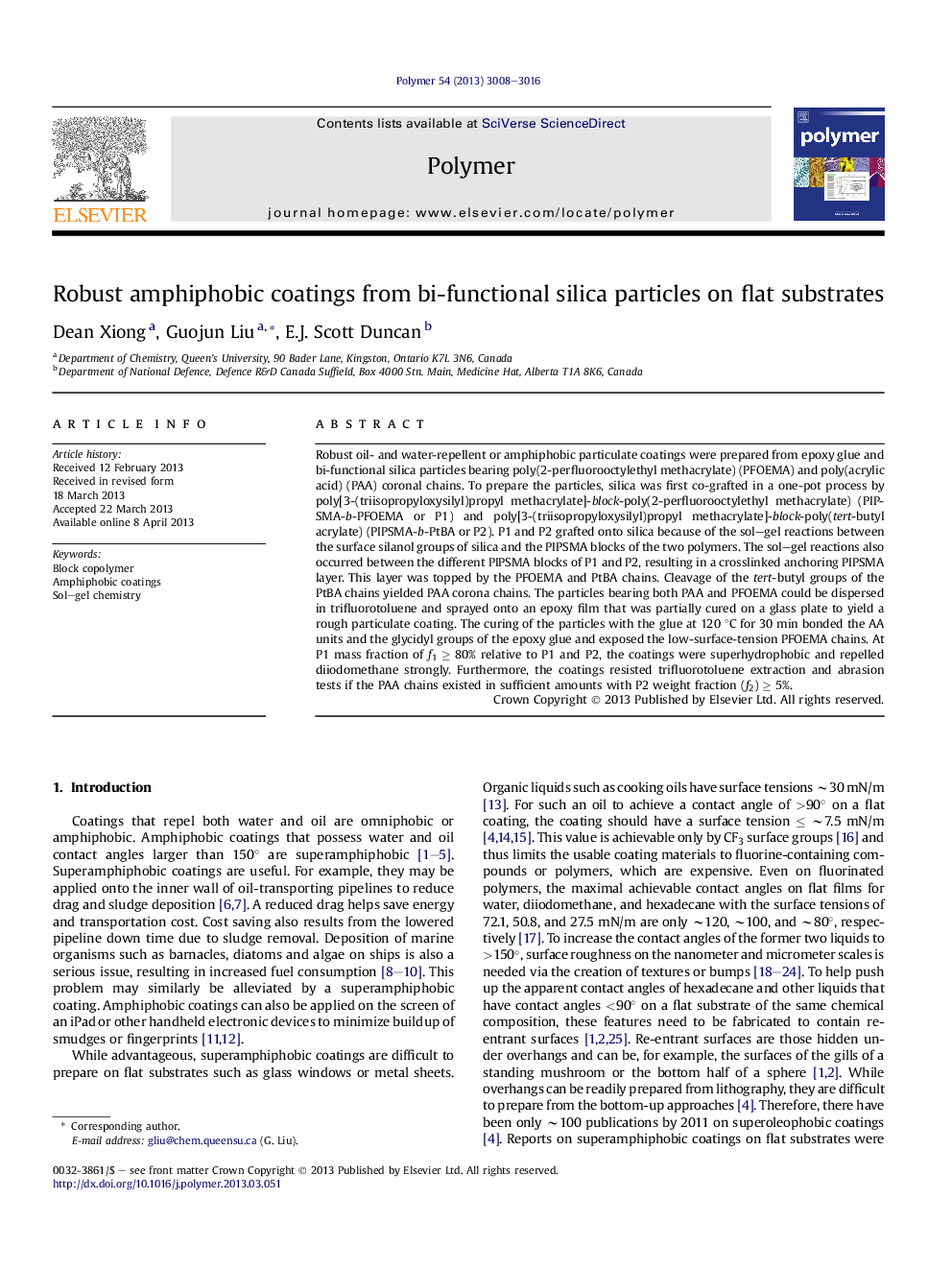| Article ID | Journal | Published Year | Pages | File Type |
|---|---|---|---|---|
| 5182385 | Polymer | 2013 | 9 Pages |
Robust oil- and water-repellent or amphiphobic particulate coatings were prepared from epoxy glue and bi-functional silica particles bearing poly(2-perfluorooctylethyl methacrylate) (PFOEMA) and poly(acrylic acid) (PAA) coronal chains. To prepare the particles, silica was first co-grafted in a one-pot process by poly[3-(triisopropyloxysilyl)propyl methacrylate]-block-poly(2-perfluorooctylethyl methacrylate) (PIPSMA-b-PFOEMA or P1) and poly[3-(triisopropyloxysilyl)propyl methacrylate]-block-poly(tert-butyl acrylate) (PIPSMA-b-PtBA or P2). P1 and P2 grafted onto silica because of the sol-gel reactions between the surface silanol groups of silica and the PIPSMA blocks of the two polymers. The sol-gel reactions also occurred between the different PIPSMA blocks of P1 and P2, resulting in a crosslinked anchoring PIPSMA layer. This layer was topped by the PFOEMA and PtBA chains. Cleavage of the tert-butyl groups of the PtBA chains yielded PAA corona chains. The particles bearing both PAA and PFOEMA could be dispersed in trifluorotoluene and sprayed onto an epoxy film that was partially cured on a glass plate to yield a rough particulate coating. The curing of the particles with the glue at 120 °C for 30 min bonded the AA units and the glycidyl groups of the epoxy glue and exposed the low-surface-tension PFOEMA chains. At P1 mass fraction of f1 â¥Â 80% relative to P1 and P2, the coatings were superhydrophobic and repelled diiodomethane strongly. Furthermore, the coatings resisted trifluorotoluene extraction and abrasion tests if the PAA chains existed in sufficient amounts with P2 weight fraction (f2) â¥Â 5%.
Graphical abstractDownload full-size image
